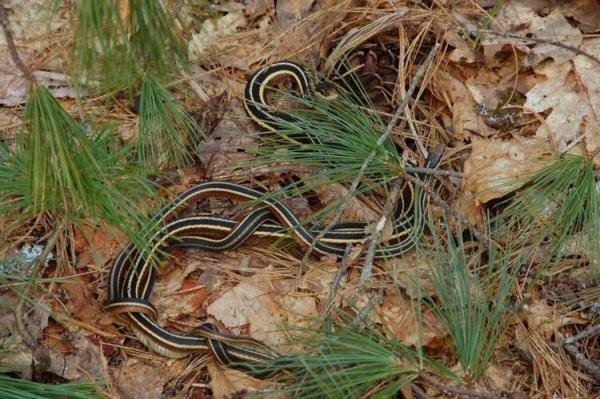Little is known about the life history of ribbonsnakes and researchers are continuing to collect valuable data on movements, behavior, threats and population biology. Some of what we do know includes:
-
Ribbonsnakes feed primarily on amphibians and minnows. Documented observations of snakes feeding are rare, but most occurred along small offshoot pools and channels, suggesting these may be primary feeding sites.
-
In Nova Scotia, active snakes have been sighted as early as March 17 and as late as Nov 21. Ribbonsnakes may become active in warm weather during winter. In 2012 a ribbonsnake was spotted in January!
-
Ribbonsnakes give birth to live young (instead of laying eggs as some snakes do) in late summer and fall. Young of the year have been seen as early as mid August. Newborn ribbonsnakes are small, usually less than 20 cm total length, and weigh only 1-3 g.
-
Ribbonsnakes occasionally aggregate in large numbers, possibly to facilitate mating. The largest recorded aggregation in Nova Scotia was reported on Sept 5, 1985 when 43 ribbonsnakes were seen in one area. In recent years, the largest aggregation was 10 snakes seen on Sept 26, 2004.
- In Nova Scotia, mating has been observed in the spring, shortly after ribbonsnakes emerge from their overwintering sites.

Mating ribbonsnakes
For more information on Nova Scotia's snakes, visit The Nova Scotia Museum of Natural History's website


